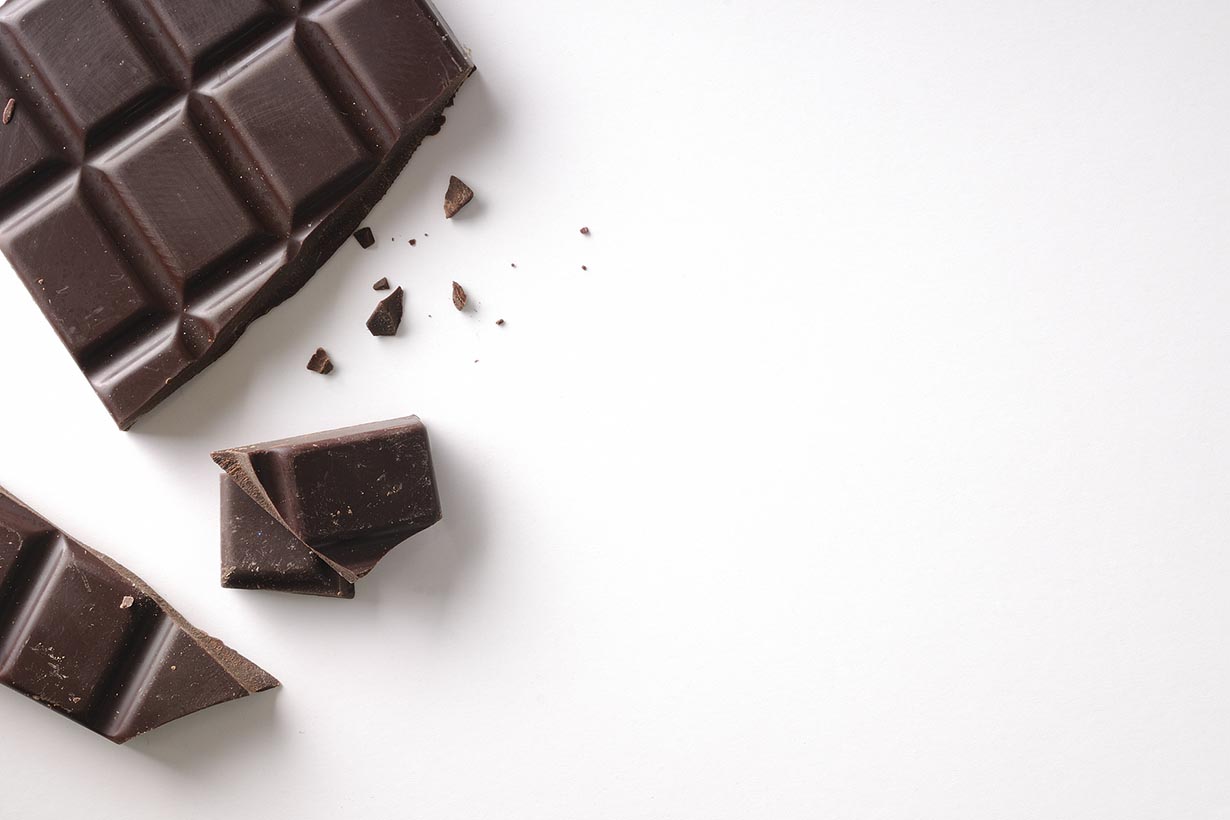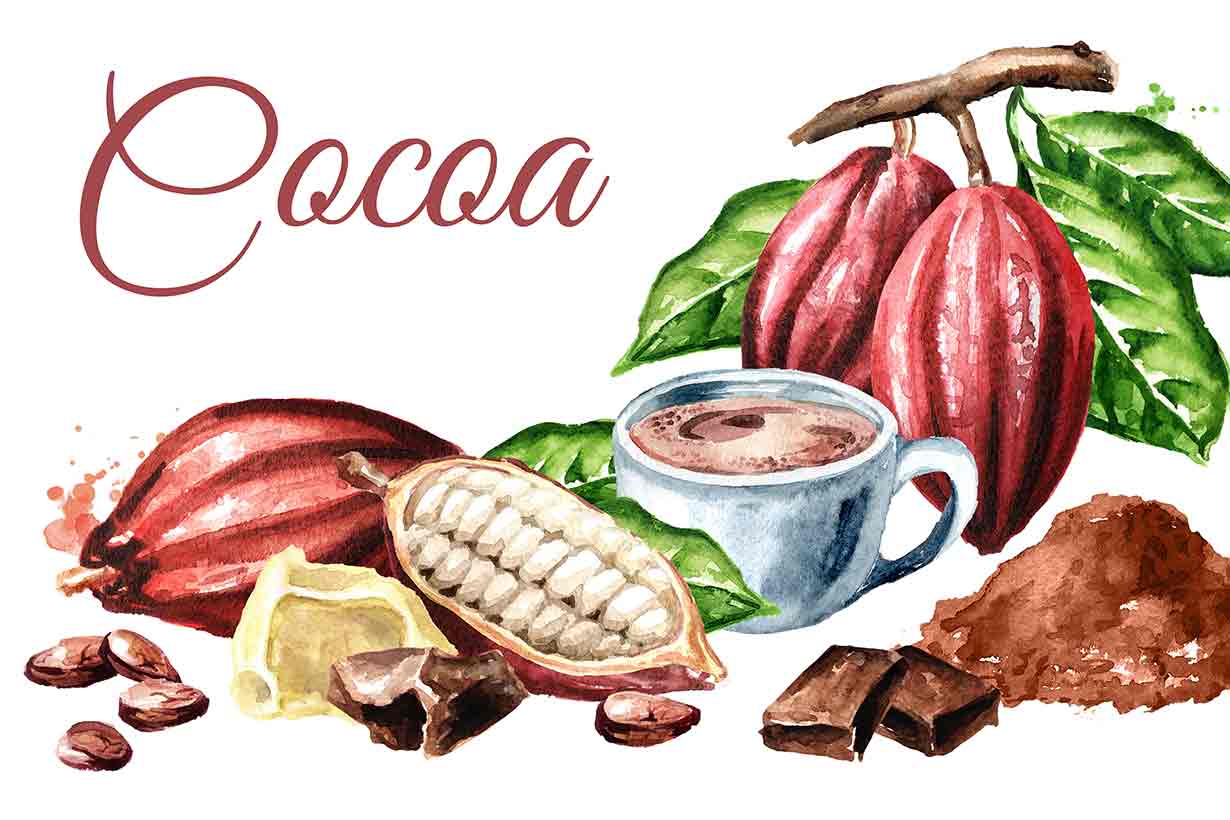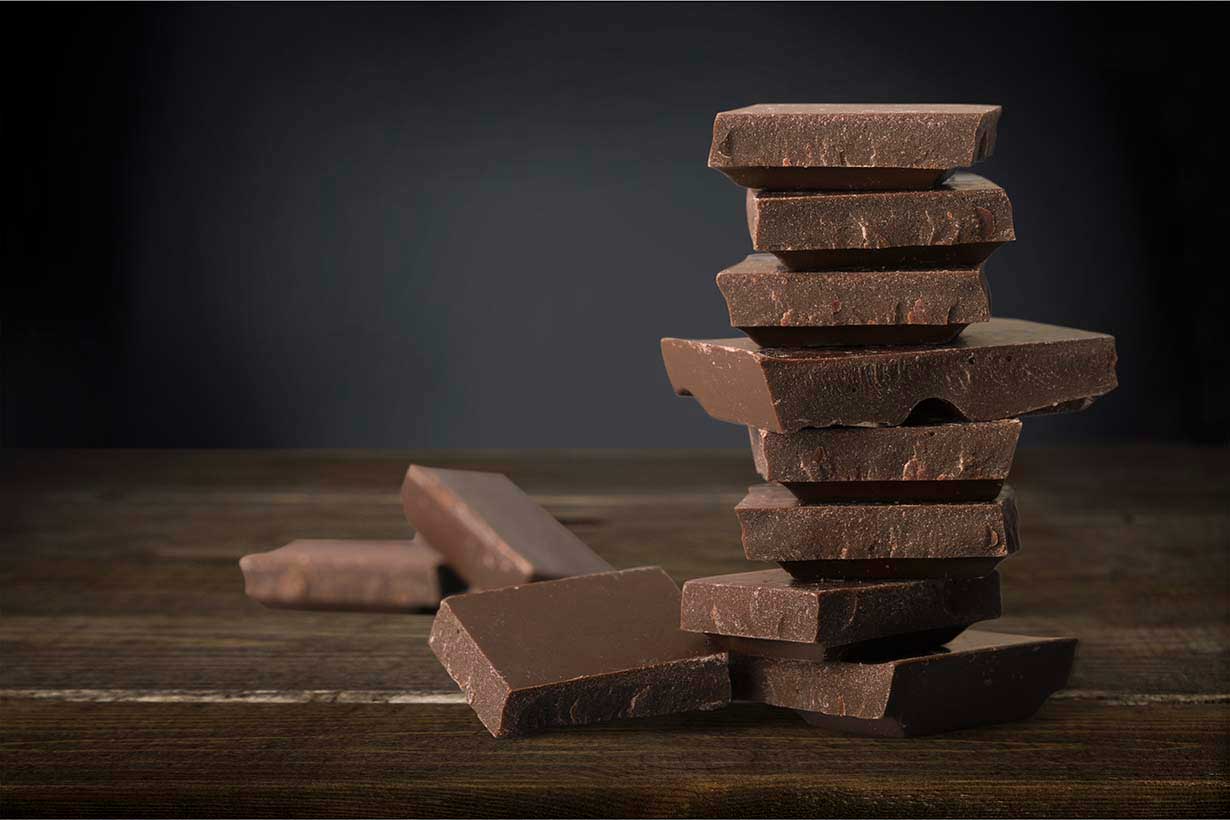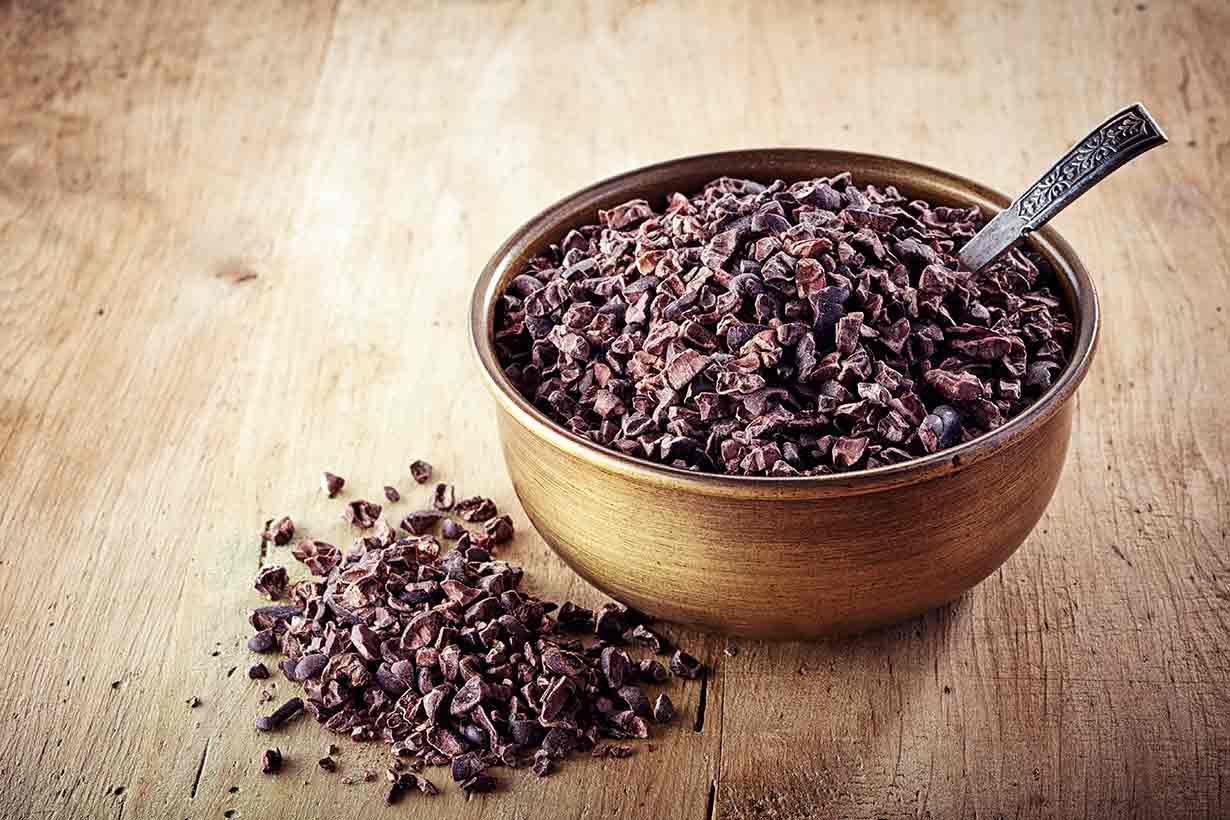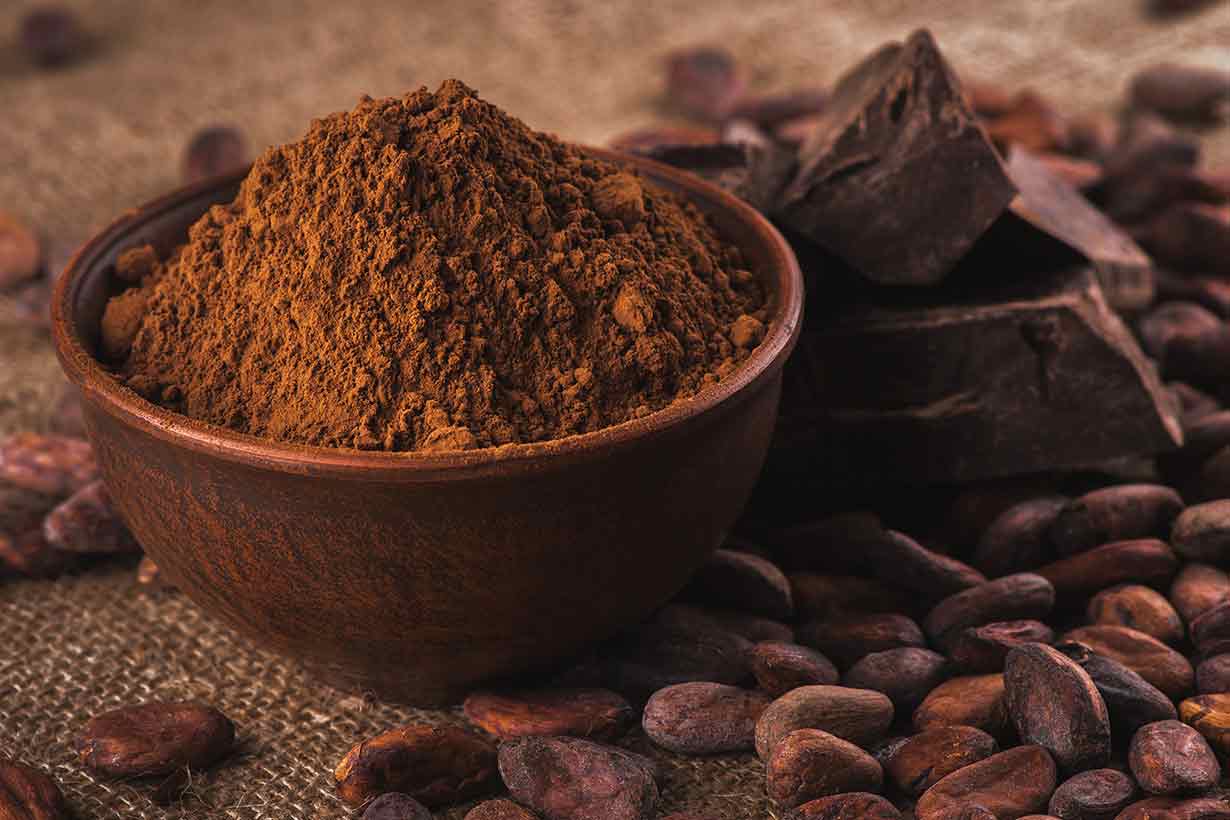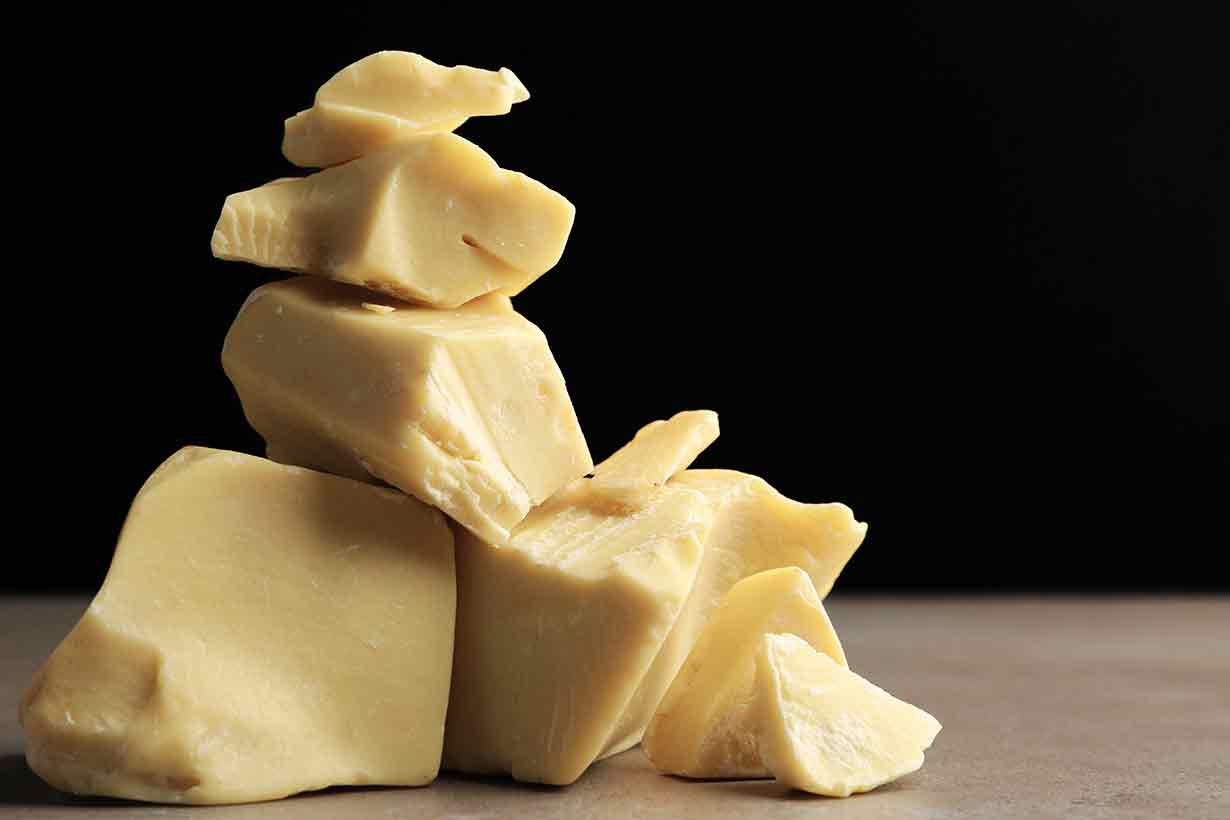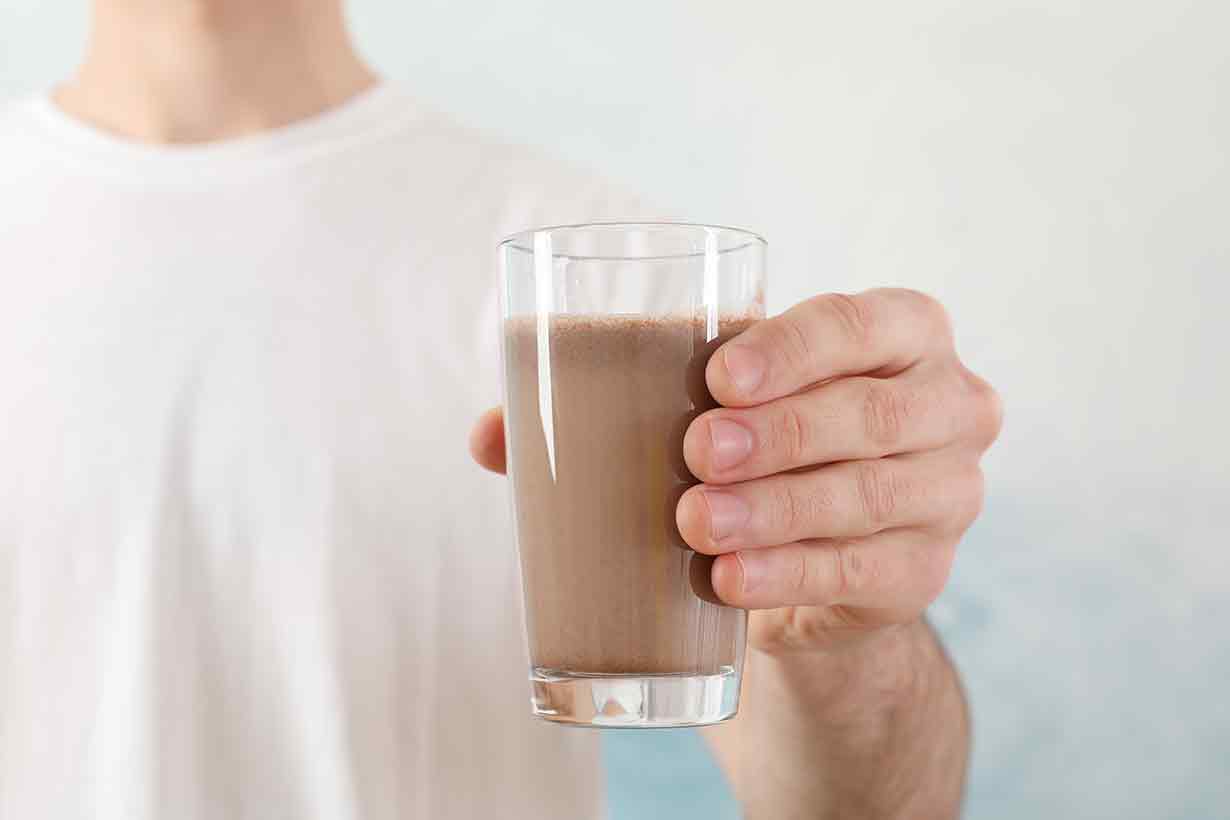Disclosure: This post may contain affiliate links. If you click on a link and purchase an item, we will receive a small commission at no extra cost to you. All opinions are our own.
Are claimed benefits of brewed cacao backed by evidence?
This article provides a comprehensive guide to brewed cacao, what it contains, and whether it has any health benefits.
What Is Brewed Cacao?
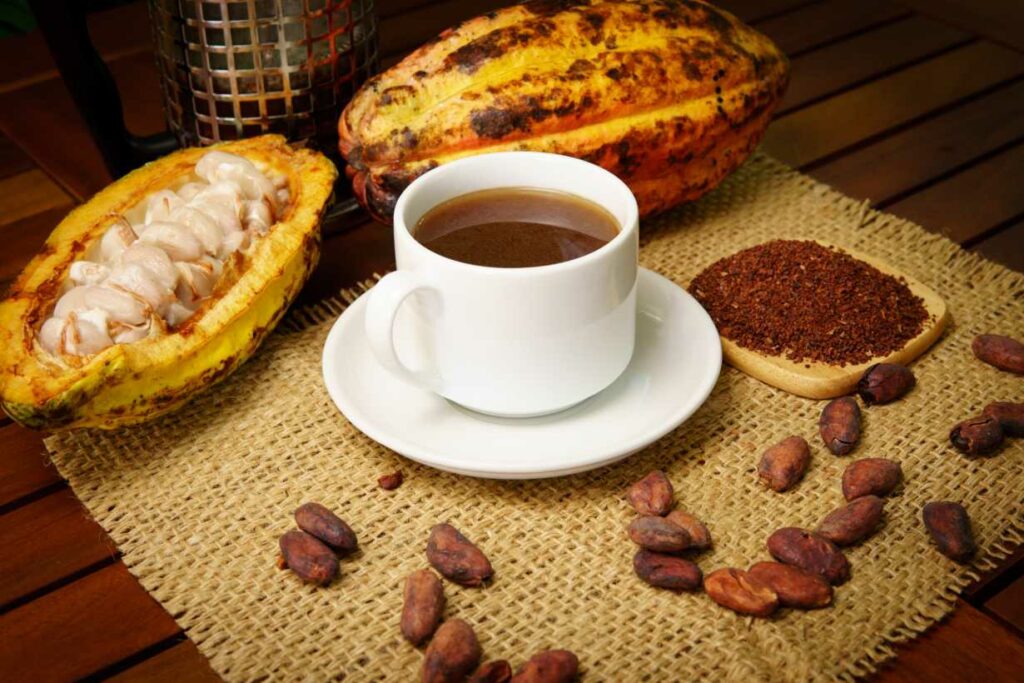
First, let’s explore what brewed cacao is.
Characteristics
Brewed cacao stands out as a chocolate product distinct from hot chocolate and other cocoa beverages.
Brewed cacao is prepared using roasted, ground cocoa beans, which are the dried and fermented seeds of the cacao plant (Theobroma cacao)
The brewing process is reminiscent of coffee preparation, using methods such as French press, teapot with a strainer, or any other typical coffee brewing method.
Brewed cacao boasts a strong and flavorful taste, which varies depending on the strength of the roast. The duration and temperature when roasting the cocoa beans determine the exact flavor profile.
Anticipate a taste slightly similar to hot chocolate made with cocoa powder but without milk. However, there are some key differences in how brewed cacao tastes compared to cocoa powder.
Firstly, cocoa powder is made by separating the ‘cocoa butter’ (fat) from the cacao bean. Brewed cacao is simply ground cocoa beans that retain the fat component, similar to other cocoa products like cacao nibs.
Furthermore, cocoa products used for making brewed cacao tend to undergo a distinct roasting process compared to cocoa powder production. Furthermore, different specific roasts are available, akin to ‘light’ and ‘dark’ coffee beans, offering varying flavor profiles.
In essence, brewed cacao is more of an alternative to brewed coffee or a cup of tea than hot chocolate.
History
Despite its recent popularity surge, brewed cacao has a long history going back thousands of years; it is certainly not a new beverage.
Historical evidence dating as far back as 1900 to 1500 BC reveals the Olmec tribe’s use of cacao in what is now Southern Mexico (1). It is thought that this was consumed as a liquid, thus being the earliest known use of ‘brewed cacao.’
In more recent times, the chocolate bar is a comparatively modern creation, as chocolate was primarily consumed as a brewed drink for a long period. This transformation from a drink to a sweet chocolate bar took place between the 1800s and the 20th century (2).
Recently, numerous ‘brewed cacao’ products designed for easy home brewing have entered the market. Many of these products are marketed for their potential health benefits.
Later in this guide, we will evaluate the validity of claimed health benefits.
What Nutritional Values Does Brewed Cacao Have?
Here is the nutritional profile for brewed cacao made with two tablespoons of ‘Venezuela Medium Roast Brewed Cacao’ from the brand Crio Bru, based on data from the CRON-O-Meter Community Database (3).
The percent daily values (% DV) have been calculated using the FDA’s daily values.
| Name | Amount | % DV |
|---|---|---|
| Calories | 20 kcal | |
| Carbohydrates | 3.0 g | 1.1% |
| Fiber | 2.0 g | 7.1% |
| Sugars | 0 g | |
| Fat | 0 g | 0% |
| Saturated | 0 g | 0% |
| Protein | 2.0 g | 4.0% |
| Cholesterol | 0 mg | 0% |
| Sodium | 0 mg | 0% |
Unfortunately, no nutrition database currently provides a complete entry for brewed cacao that includes its vitamin and mineral profile.
However, cacao beans are rich in magnesium, making it likely that brewed cacao contains at least some of this essential mineral (4).
Potential Health Benefits of Brewed Cacao
As mentioned earlier, it is easy to come across claims that brewed cacao has a range of benefits. Yet, it is crucial to acknowledge the lack of research and published peer-reviewed studies on this drink.
Peer-reviewed research exists on cocoa powder, which is the powder form of cocoa beans that we consume as a dissolved drink.
However, when it comes to brewed cacao, since the cacao grounds are discarded instead of consumed, the nutritional similarity between the two drinks is unclear.
In this section, we will delve into some potential benefits of consuming brewed cacao and provide relevant supportive references whenever possible.
Brewed Cacao Contains Theobromine
Like dark chocolate and other chocolate products, brewed cacao will contains theobromine.
Theobromine is an xanthine alkaloid, a kind of phytochemical found in cocoa beans. Phytochemicals are bioactive (biologically active) compounds found in plants.
Theobromine is structurally similar to caffeine, but it has a milder effect on the central nervous system. Research shows it acts as a vasodilator, which means that it can widen blood vessels (8).
In a 2021 study published in Circulation, the official journal of the American Heart Association, theobromine showed potential cardiovascular benefits. This study examined theobromine intake among 42,038 participants in the National Health and Nutrition Examination Survey (NHANES) from 1996 to 2016. Notably, those with moderate to high theobromine intake had associated improved cholesterol profiles and reduced hypertension prevalence (9).
Obtaining data on the exact theobromine content in brewed cacao is challenging. However, ‘Soul Life Cacao,’ a company that sells brewed cacao products, claims to have tested its cacao with a third-party laboratory. According to the results, a cup serving of brewed cacao contains between 248 mg and 468 mg, depending on the specific variety they sell (10).
For comparison, a 5.4-gram tablespoon of dry cocoa powder contains approximately 111 mg of theobromine, and 100 grams of cocoa powder contains 2060 mg of theobromine (11, 12).
High in Polyphenols
Cocoa beans rank among the most polyphenol-rich dietary sources, offering approximately 6-8% polyphenols by dry weight (13).
Polyphenols, a class of phytonutrients, are thought to confer health benefits. Studies consistently find strong associations between polyphenol-rich diets and reduced risk of chronic diseases and all-cause mortality (14, 15).
Systematic reviews of existing research on cocoa polyphenols and large observational studies suggest potential benefits associated with their consumption for (16, 17, 18, 19):
- Cognitive function.
- Improving flow-mediated dilation (which measures how well blood vessels dilate when blood flow increases).
- Lowering coronary heart disease and stroke risk.
- Modestly lowering all-cause mortality.
However, it is worth highlighting that further research is necessary, and the quality of evidence for some of these potential benefits was rated as low to moderate by the researchers.
What is the polyphenol content of brewed cacao?
Cocoa and dark chocolate are known for their high polyphenol content (20, 21).
Since brewed cacao is derived from cocoa beans, it is likely to also have high polyphenol levels.
However, once again, there’s currently no research on the quantity of polyphenols in brewed cacao.
In this context, it is worth noting that coffee is also a rich source of polyphenols, with the brewing process resulting in a drink considered “the main source of phenolic acids and hydroxycinnamic acids in Western diets” (the primary polyphenols in coffee) (22).
Given this, it is highly likely that brewed cacao will also offer significant polyphenol intake. The main polyphenols in cocoa products are flavonoids like catechin and epicatechin (23).
Other bioactive compounds in brewed cacao
Brewed cacao will also contain other bioactive compounds found within the cocoa bean.
It is believed that these compounds may have a positive impact on mood, although strong evidence to confirm this is lacking (24).
Some of the bioactive compounds found in cocoa products include (24, 25, 26):
- Seratonin: A neurotransmitter that helps regulate mood. However, the amount present in cocoa products is unlikely to be absorbed effectively enough to have significant effects.
- Phenylethylamine: Abbreviated as PEA, phenylethylamine is a chemical found in cocoa beans, sometimes referred to as a “love chemical.” However, it is present in relatively small quantities and may potentially have a small impact on mood.
- Anandamide: Another neurotransmitter found in cocoa products that may have a slight positive impact on mood. However, once again, the amounts present are relatively low.
- Caffeine: brewed cacao contains some caffeine, but in smaller amounts than coffee. According to Crio Bru, a brand that sells brewed cacao, a serving provides around 15 mg of caffeine (27). In contrast, research shows that, based on 97 espresso samples, the mean caffeine content for espresso was 106 mg (28).
How To Make Brewed Cacao
Making brewed cacao is simple, and there are various ways to do it:
- French press: Add ground cacao to the French press, and pour hot water over it. After this, allow the mixture to steep for five minutes or longer for a stronger flavor. Once steeped, press down the French press plunger and pour into a cup.
- Using a saucepan: Place the ground cacao into a saucepan, add a cup of water, and simmer for 5-10 minutes while stirring occasionally. After this, strain the liquid into a cup using a fine-mesh strainer.
- Coffee maker: Use a coffee machine with cacao grounds like you would with coffee.
In truth, there are numerous ways to make brewed cacao, and any coffee-making method should work well.
There is a resource here showing several further methods of making the drink.
Where Can You Buy Brewed Cacao?
You can find numerous companies selling brewed cacao directly from their websites. A simple search for ‘buy brewed cacao’ should provide some options.
In addition, large grocery stores like Whole Foods Market often carry these products.
Moreover, Amazon provides a broad range of brewed cacao products to choose from.
Frequently Asked Questions
If you have any further questions about brewed cacao, here are some answers to typical commonly asked ones.
While the drink will contain some vitamins and minerals, such as magnesium, these will be present in relatively small amounts.
No, the taste of brewed cacao is distinct from coffee. Both possess bold and strong taste characteristics, but they have very different flavors. Depending on personal taste preferences, some may like coffee but dislike brewed cacao, and vice-versa.
The bitterness will depend on the cacao-to-water ratio used. By following recommended preparation instructions, brewed cacao can be quite bitter, similar to espresso and Americano. It is a pure and unsweetened drink made from cacao grounds. Those that prefer a milder taste could add a dash of milk or creamer and a sweetener to taste.
Final Thoughts
It is possible to see many claims about the health benefits of brewed cacao, but there is relatively little published scientific research on it.
However, brewed cacao comprises a wide range of bioactive compounds, including caffeine, theobromine, phenylethylamine, anandamide, and flavonoid polyphenols.
Thus, the combination of compounds in brewed cacao may potentially offer benefits.
For those that enjoy the taste and don’t mind the added expense compared to cocoa powder, brewed cacao might be an interesting option to explore.

